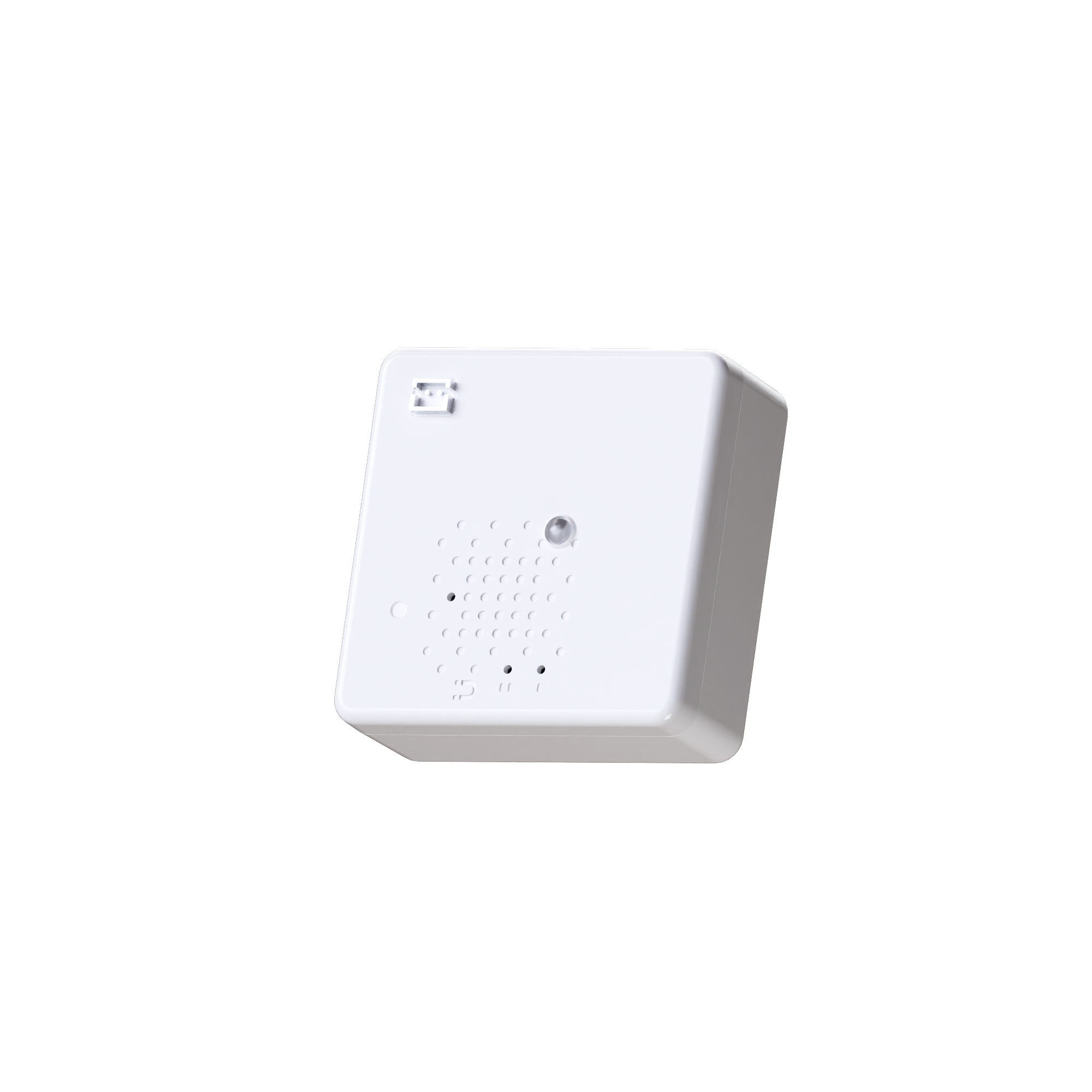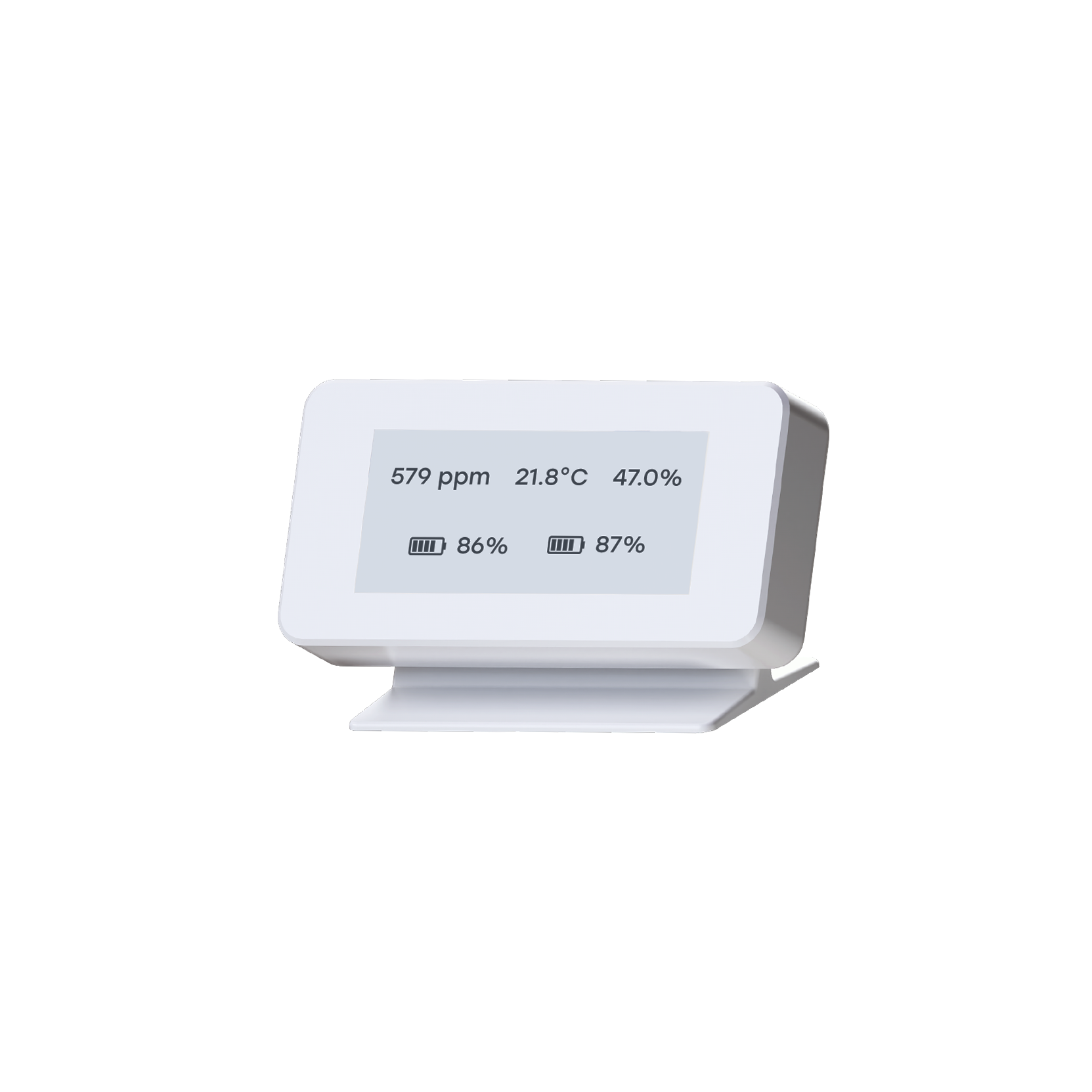BREEZE INDOOR AIR QUALITY & CO2 SENSOR
Efficiently monitor CO2 levels for enhanced productivity, health, and well-being
IP 30
5 + Years

CO2 Concentration
Light
Temperature
Humidity
Barometric Air Pressure
Humidity
Barometric Air Pressure
CO2 Concentration
Light
Temperature
Humidity
Barometric Air Pressure
Works Best for
Combatting fatigue and enhancing concentration, the BREEZE Indoor Air Quality & CO2 Sensor ensures a healthy atmosphere in schools, offices, and homes by actively monitoring CO2 levels for a thriving and more productive environment.
key verticals
Smart Home & Office
Schools & Universities
Retail
Public Buildings
Elevating Your Home & Office Environment
The BREEZE Sensor could easily optimize air quality in your workplace or home. Beyond accurate CO2 monitoring, it also tracks humidity and temperature, allowing you to craft an ideal living atmosphere. Enhance productivity, comfort, and overall well-being for your team or family with BREEZE, ensuring environments that prioritize health and performance.


Balancing Air Quality in Educational Spaces
BREEZE is an ideal solution for educational institutions, from kindergartens to universities. This multi-function sensor monitors CO2 levels, humidity, and temperature to create a conducive learning environment. Ensure a healthy and comfortable space where students and staff can focus, perform their best, and breathe easily. With BREEZE, air quality is no longer a concern; it's a given.


Air Quality Monitoring in Retail Environments
BREEZE ensures a perfect shopping environment by continuously monitoring CO2 levels, humidity, temperature, and lighting in retail spaces. Its wireless capabilities, extensive indoor coverage, and long-lasting battery life are well-suited for enhancing customer satisfaction. Trust BREEZE to create an exceptional shopping experience, prioritizing the well-being of customers and staff.


Optimizing Air Quality in Public Buildings
The device is a viable choice for public buildings, such as government offices and community centers. By monitoring CO2 levels, humidity, temperature, and lighting, the sensor ensures occupants a healthy and comfortable environment. With its wireless capabilities and long-lasting battery life, the BREEZE Sensor can be easily deployed and integrated, offering comprehensive indoor coverage.


breeze benefits
01
01
High Accuracy & Reliability
The TEKTELIC BREEZE sensor guarantees high accuracy and reliability with integrated barometric pressure compensation for variations in deployment altitude. This feature enhances data precision, making BREEZE a trustworthy solution for diverse environmental conditions.
Pairable with E-Ink Display
The TEKTELIC BREEZE CO2 monitoring solution, comprising the BREEZE sensor and E-Ink Display, offers flexibility in deployment. Users can strategically position the BREEZE sensor for optimal CO2 monitoring. At the same time, the E-Ink Display can be conveniently placed in a practical location for easy viewing, ensuring accurate and accessible data on temperature, humidity, and CO2 levels.
Optimized Placement: CO2 Sensor and Display
The sensor is deployed in the appropriate location to monitor CO2, while the display can be placed in a practical location to be viewed.
Long Battery Life
The sensor is designed to achieve 5+ years of battery life, decreasing maintenance costs associated with battery replacement and minimizing the risk of losing data from a dead battery. The Bluetooth display includes a battery life indicator for seamless monitoring, ensuring timely replacements when needed.
Auto Calibration
The BREEZE Sensor self-calibrates CO2 levels at a configurable time (7 days by default), eliminating manual intervention and reducing maintenance time and costs.
01
01
Monitor and Improve Your CO2 Level
BREEZE helps enhance indoor air quality at home, school, or the office, optimizing building performance and promoting workspace well-being, prioritizing air quality for a healthier environment.
Control your CO2 levels in homes, offices, schools & public places
MAIN FEATURES
- User Configurable Parameters and Thresholds
- Designed for Optimal Battery Life
- Pairable with E-Ink Display
- Wall, Ceiling or Table Mount Configurations
- Simple Deployment
- Sleek and Unobstructed Design
- Ambient Indoor Environment Monitoring
Differentiations
- Automatic Calibration.
- Designed for Accuracy and Reliability.
- End-to-End Solution (BREEZE sensor, Display and Web/Mobile App).
- Specifically designed to achieve 5+ Years of battery life, reducing maintenance costs.
- Comprehensive Range CO2 Monitoring.
MAIN FEATURES
- User Configurable Parameters and Thresholds
- Designed for Optimal Battery Life
- Pairable with E-Ink Display
- Wall, Ceiling or Table Mount Configurations
- Simple Deployment
- Sleek and Unobstructed Design
- Ambient Indoor Environment Monitoring
Differentiations
- Automatic Calibration.
- Designed for Accuracy and Reliability.
- End-to-End Solution (BREEZE sensor, Display and Web/Mobile App).
- Specifically designed to achieve 5+ Years of battery life, reducing maintenance costs.
- Comprehensive Range CO2 Monitoring.
TECHNICAL CHARACTERISTICS
Operational Temperature
0°C to 60°C
RF Power
15 dBm
Ingress Protection
IP30
LoRa Device Class
Class A
Battery
2x AA LTC
Antenna
Internal
Weight
91 g
RF Sensitivity
up to -137dBm
Battery life
5 Years
All Global ism bands
All Global ISM Bands
Empower Your Business Growth with a Trusted Supplier of LoRaWAN® Solutions

Why Choose
TEKTELIC Devices
TEKTELIC offers top-of-the-line LoRaWAN® gateways, sensors, and custom applications. These products, when combined, create a robust end-to-end solution that can be deployed efficiently and cost-effectively to tackle even the most complex IoT challenges.











01
01
Smarter Monitoring for Ultra-Sterile Hospital Environments
Supporting Gas Safety Compliance in New York Residential Buildings
Transforming Community Gardens with Automated Irrigation
How the University of Lethbridge Prevented Flooding with LoRaWAN® Technology
LoRaWAN® Gateway Integration for Industrial Parking Management
Optimizing Water Usage in Agriculture with LoRaWAN® Solution
01
01



